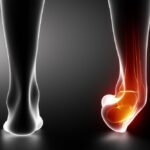Arthritis is a common condition that causes pain, stiffness, and reduced mobility in joints throughout the body. The condition encompasses over 100 different types of joint inflammation, with osteoarthritis and rheumatoid arthritis being the most common forms. Understanding this condition and recognizing its early signs can lead to more effective treatment outcomes.
What Is Arthritis?
Arthritis refers to inflammation of one or more joints, causing pain, swelling, and decreased range of motion. The condition can affect people of all ages, though it becomes more common with advancing age. Different types of arthritis have distinct characteristics and affect joints in various ways.
Osteoarthritis occurs when protective cartilage that cushions the ends of bones wears down over time. This degenerative condition commonly affects weight-bearing joints such as knees, hips, and spine. Rheumatoid arthritis is an autoimmune disorder in which the body’s immune system mistakenly attacks healthy joint tissue, leading to inflammation and joint damage.
What Causes It?
Multiple factors contribute to the development of this condition, with age being a primary risk factor for osteoarthritis. Joint cartilage naturally breaks down over time, making older adults more susceptible to this degenerative condition. Genetics also plays a role, as family history increases the likelihood of developing certain types of arthritis.
Previous joint injuries can lead to post-traumatic arthritis years after the initial damage occurred. Repetitive stress on joints from occupational activities or participation in sports may accelerate cartilage breakdown. Obesity places additional stress on weight-bearing joints, particularly knees and hips, increasing the risk of degenerative conditions.
What Are the Symptoms?
Joint pain is the most common symptom, ranging from mild discomfort to severe, debilitating pain. The pain may be constant or intermittent, often worsening with physical activity or weather changes. Morning stiffness may indicate inflammatory arthritis rather than mechanical joint problems.
Swelling around affected joints occurs due to inflammation and fluid accumulation. This swelling may be visible or only detectable through physical examination by a healthcare provider. Joint tenderness that occurs when pressure is applied suggests active inflammation, requiring a medical evaluation.
As the condition progresses, a reduced range of motion develops, making daily activities increasingly difficult. Simple tasks, such as opening jars, climbing stairs, or getting dressed, may become difficult. Some patients may experience joint instability or a grinding sensation when moving the affected joints.
How Is It Diagnosed?
A diagnosis typically begins with a comprehensive medical history and a thorough physical examination. Your doctor will ask about the duration, location, and severity of your symptoms, as well as your family history and any previous injuries. A physical examination may include assessing joint swelling, tenderness, range of motion, and joint stability. Imaging studies offer detailed views of joint structures and their associated damage.
How Is Early Diagnosis Beneficial?
Early diagnosis enables the prompt initiation of treatment, which can slow the progression of the disease. Lifestyle modifications implemented early can preserve joint function and reduce symptom severity. Understanding the specific type of arthritis allows for targeted treatment approaches and realistic prognosis discussions. Patients can make informed decisions about work, activities, and long-term planning when they understand their condition.
Seek a Diagnosis Now
An arthritis diagnosis involves a systematic approach combining clinical evaluation, laboratory testing, and imaging studies. Recognition of early symptoms and prompt medical evaluation can lead to better long-term outcomes through timely intervention. Different types of arthritis require specific treatment approaches, making an accurate diagnosis integral for appropriate care. Consult an orthopedic specialist to begin the diagnostic process and develop an appropriate treatment plan for your joint health.









Leave a Reply